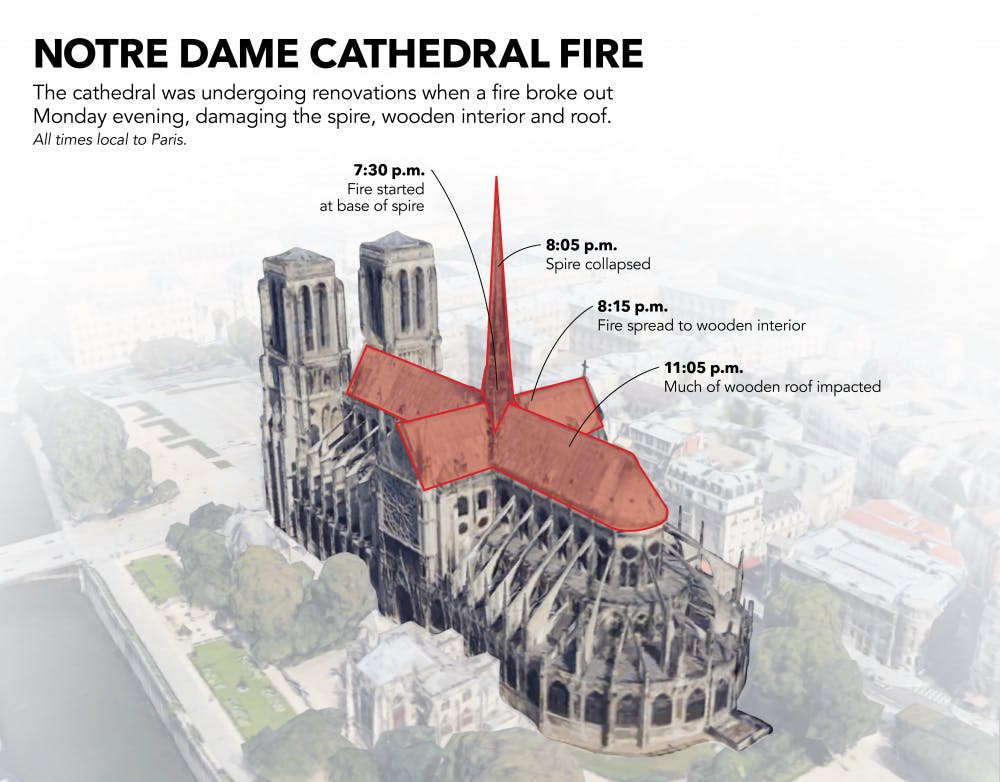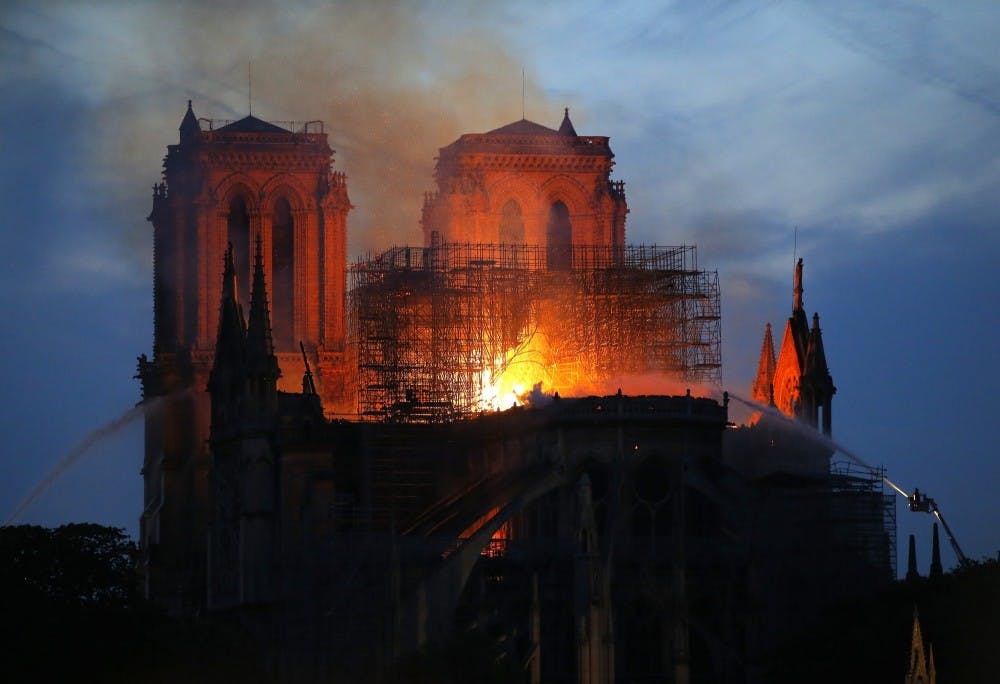On an unsuspecting Monday, a recognizable Parisian monument was set ablaze with smoke visible far and wide in the city and the news impacting people across the world, even at Ball State.
The Notre Dame Cathedral caught fire April 16 in Paris. The cause is not yet known, but it is possible it had something to do with the renovations, according to the Associated Press.
Frederick Suppe, associate professor of history, said if Americans were to experience a similar event, they would feel the same as the French do now.
“If you look for an American equivalent building that everybody in the country is familiar with it would be the White House or maybe George Washington's estate at Mount Vernon that so many people have visited,” Suppe said.
Construction began on Notre Dame (or “Our Lady”) began construction in 1163, with the first stone laid in the presence of Pope Alexander III, according to the monument’s website. Suppe said it is dedicated to the Virgin Mary.

Source: Google Maps, AP
Marie-Line Brunet, assistant professor of French, grew up in Sartrouville — a district in the suburbs of Paris — and frequented the city with her family to visit museums and the cathedral.
The “significant size” of the atmosphere makes it impossible to not recognize when you walk by it, Brunet said.
“There is a very serene atmosphere. It's just, it's astonishing to think that people were able to build that,” she said. “It's always a question of ‘How on earth is it possible to build something is monumental and that it has survived the ages, the times, the wars, the conflicts, that religious wars, the Second World War and other things?’”
Brunet said she was first notified by her colleague about the fire. She then checked French newspapers to see what was happening and called her sister who lives in Paris to ask about the incident.
“What’s been very striking is the silence of people. [My sister] was saying that people were watching it from different parts [of the city] because you could see the smoke from really far away,” Brunet said. “But what she was saying is that people were just staring at it in silence and just seeing it happening in front of their eyes.”
The cathedral was like a “district office” for Catholicism, able to hold a couple thousand people for a day of worship, Suppe said.
Inside the cathedral, carvings on the walls and stained glass windows depicted significant moments from the Bible. These illustrations were a “giant lesson in Christianity” for people who learned visually back in the Middle Ages, he said.
According to Associated Press reports, hundreds of millions of euros have been pledged toward funding its reconstruction.
“One problem [is that] some of the walls still standing may not really be solid,” Suppe said. “They may need to knock those down and see if the old medieval cut stone is still salvageable, or whether they need to cut some new stone.”
Contact Charles Melton with comments at cwmelton@bsu.edu or on Twitter @Cmelton144.





